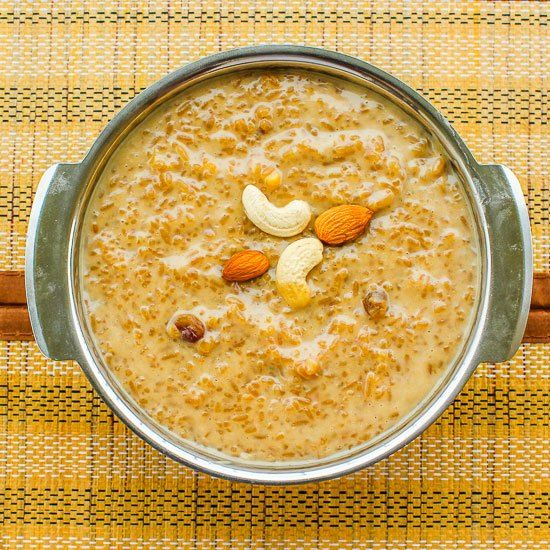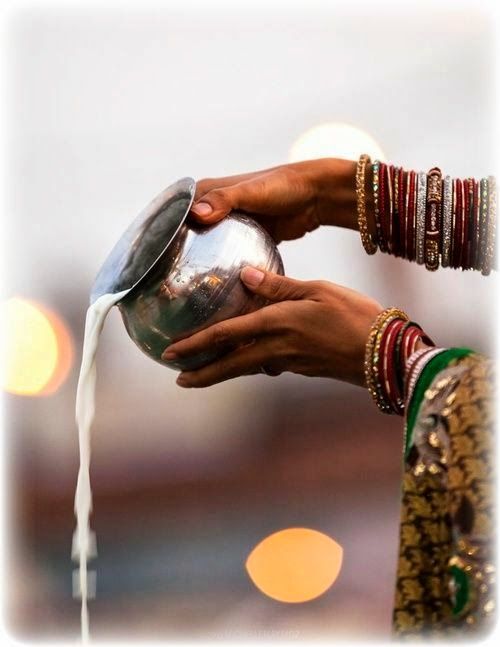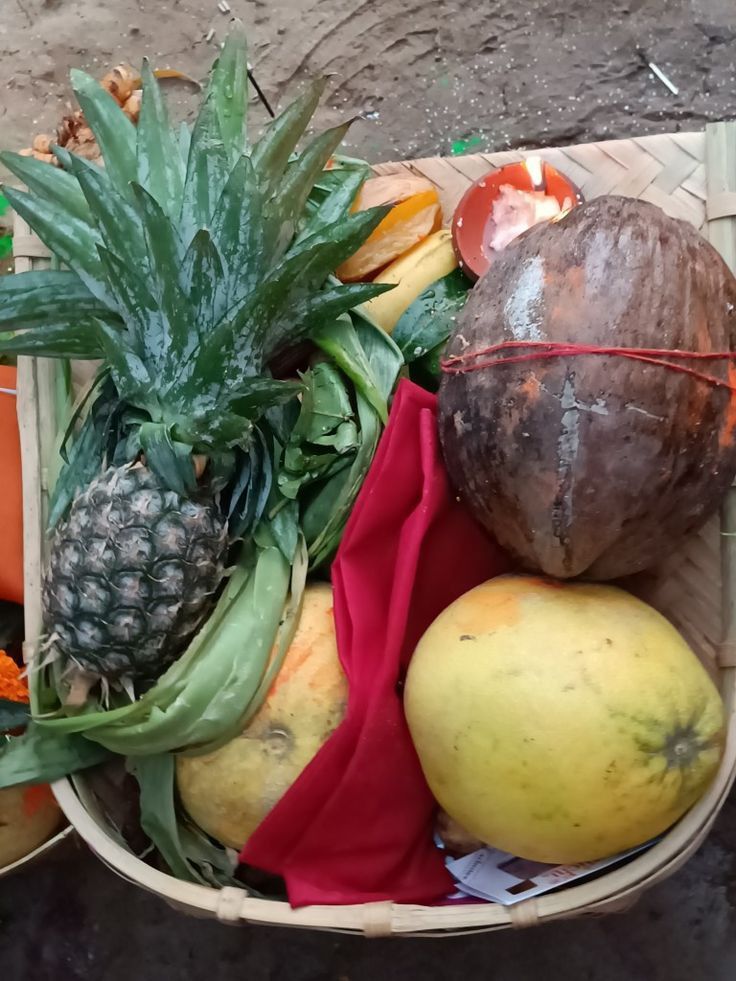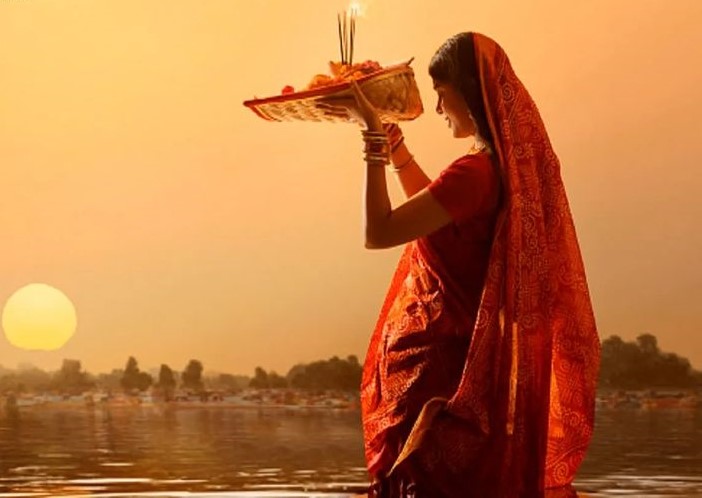India accommodates a range of different religions, countless communities, and various festivals, each having its hues, flavors, and rituals.
Chhath Puja is also one of such age-old and vibrant festivals in India. It is primarily celebrated in the Indian states of Bihar, Jharkhand, and Uttar Pradesh, but with time and voluntary migration in recent years, it is no longer a community-centered festival.
In Hindu culture, nature and the energies associated with it are worshiped in the form of gods and goddesses. This is a way to express gratitude to nature and seek blessings by tapping into its special energy.
Worshiping the Sun God
The rituals relating to worshipping the sun are mentioned in the Rig Veda. Sages used to worship the Sun God, the symbol of energy and life, for longevity and prosperity.
With time, even today this worshipping tradition continues and has become an important part of people’s lives.
Origins of Chhath Puja
Chhath Puja is renowned for its distinctive way of fasting, praying, and seeking blessings from Surya Dev and Chhathi Maiya.
Although the precise origins of Chhathi Maiya are not entirely recorded in the scriptures, she is strongly ingrained in local customs and the oral history of Chhath Puja. It is popular to worship nature and household guardian angels in Agrarian societies that relied significantly on seasonal cycles and natural components for survival. As a guardian figure associated with the Sun God (as his daughter), Chhathi Maiya became a crucial component of Chhath Puja.
Who is Chhathi Maiya?
Chhathi Maiya is considered the goddess of fertility, good health, and the protector of children.
The word Chhath or Chhathi is a simplified version in local dialect for the Sanskrit word Shashti. There are some references where Chhathi Maiya is considered to be Shashthi Devi-Katyayni, who is worshiped on Shashthi tithi of Kartik month. According to the legends, to grace, Rishi Katyayan, Goddess Durga appeared before him as his daughter.
Later Hindu texts, Matsya Purana and Skanda Purana say that Goddess Shashthi was born from Pranav (Hum) of Lord Brahma, who gives happiness and protects family and children.
Stories about Chhath Puja
Legends and folklore tell various stories about the origin of Chhath Puja. Some people also connect it with the Ramayana. It is believed that Shree Ram and Mata Sita performed Chhath Puja after returning to Ayodhya.
According to other popular traditions, this puja was also performed by Pandavas and Draupadi to get the blessings of the Sun God and Chhathi Maiya during the Mahabharata period. The story of King Priyavrat and his wife Malini worshiping the Sun God to have a child is also an off-shoot branch of this folklore.
Significance of Fasting:
Chhath Puja is a four-day vrat (fasting) puja. It holds unique rituals demanding self-discipline, commitment, and devotion. Women fast for the sake of their families and kids. This difficult fasting is observed for the welfare of both girls and boys in the family. In this puja, devotees purify their mind and body through vrat (abstinence from food and water for extended periods), and holy dips in river water. Let’s explore Chhath Puja’s various rituals and practices.
Day 1: Nahay Khay (Bath and Eat):

Those who observe fast on the first day of Chhath puja (especially women) purify their house and body as first thing in the morning. Body purification starts with a holy bath in the river or pond and consuming the Satvik—a simple and humble food of white rice with bottle gourd (lauki) sabzi. This is a food that marks the onset of the fast.
Day 2: Kharna (fast-breaking):

On the second day, after the purifying, strict fasting without water is observed throughout the day. At dusk they break their fast with kheer made from jaggery and rice. Along with this simple meal prepared without salt, garlic, or onions, reflecting the simplicity and purity of the ritual.
Day 3: Sandhya Arghya (Evening Offering):

The third day, one of the most important days of the four-day festival. Varti’s gather near the banks of a river or some pond with their families and neighbors to offer the ‘Arghya’ to the setting sun. They carry bamboo baskets filled with fruits, sugarcane, thekua (a traditional sweet made from wheat flour), and other offerings, which they raise to the sun as a mark of respect and gratitude.
At this time, Sun God and Chhathi Maiya are worshiped together due to their connection with nature and life.
Day 4: Usha Arghya (Morning Offering):

The fourth and last day begins before dawn as those observing fast once again return to the water body to offer Arghya this time—to the rising sun. This ritual marks the conclusion of the four-day festival of Chhath Puja. Afterward, the devotees break their fast and receive blessings from the elders.
Simplicity in Rituals and Offerings:

Every ritual and offering of Chhath puja shows simplicity and gratitude. as a gesture of thanks towards nature. Organic items like fruits and sugarcane are kept in bamboo baskets as offerings.
The festival uses bamboo and other biodegradable items, which is an environmentally friendly practice.
Significance of Sunrise and Sunset:
Praying at both times, sunrise and sunset shows a balance between the setting and rising sun and the circle of continuing life. In all Hindu rituals, the sun is worshipped only on rising; but this third day of Chhath puja honors the setting sun.
Celebrating the Good Harvest:
Chhath puja marks the celebration of a good harvest. Expressing gratitude to the sun as a source of energy and water as life on earth for the bountiful crop. Also offering them the harvest of fruits and sugarcane as a token of gratitude to seek blessings for their families for the whole year.
Flavor of Folk Songs:
Folk songs are also an integral part of Chhath Puja. They are sung in groups at the riverbank or ghat. Singing together evokes the feeling of being collective, capturing the essence of devotion, gratitude, and cultural heritage. In the Maithili, Bhojpuri, and Magahi languages, these songs tell stories of familial bonds, wishes for well-being, prosperity and express love and reverence for Surya Dev (Sun God) and Chhathi Maiya. Here are a few commonly sung folk songs during puja that make Chhath special:
- Kaanch Hi Baans Ke Bahangiya,
- Uga Ho Suruj Dev Bhail Aragh Ke Ber,
- Patna Ke Ghat Par,
- Ho Dinanath,
- Pahile Pahil Chhathi Maiya
Chhath Puja fosters community spirit, and also a united spirit is seen, especially when everyone goes near water bodies to offer prayers. The participation of family and friends creates a moment of strong bonding in our support system.
Celebration in Urban Areas:
Of all the Indian states, Chhath Puja is observed with a few modifications. The abundance of open space and aquatic bodies has also led to some moderation among city dwellers. However, beliefs and practices are the same.
Evolution for Immigrant Families:
This celebration has evolved into a means for immigrant families to stay connected to their cultural roots, preserving their cultural identity. Getting together to celebrate connects the youth to their roots. It allows them the opportunity to follow cultural values and understand the traditional rituals of the family.
The Eco-friendly Festival:
In a world increasingly concerned with environmental conservation, Chhath Puja advocates eco-friendly practices. Offerings used in the rituals are made with organic and biodegradable material; even the container for the offering is made of bamboo. The festival encourages and demonstrates an environmentally conscious approach by avoiding plastic and synthetic materials in rituals. This aspect of Chhath Puja resonates strongly with modern ecological sensibilities—a cultural practice that upholds environmental integrity.
Wrapping Up:
Chhath Puja is not just a religious tradition or festival; it is a practice of cleansing, dedication, and self-discipline. It gives a message to stay connected with society and also reminds to intertwine life with nature. Finally it teaches to appreciate nature for our physical and mental health.
image: Pinterest


So useful information
Thank you for sharing your thoughts. Plz keep reading.